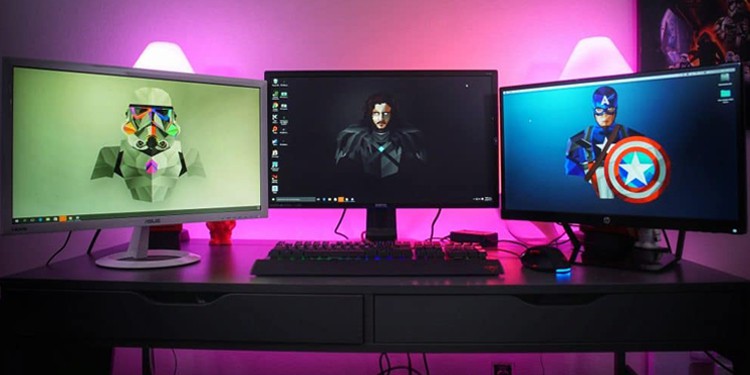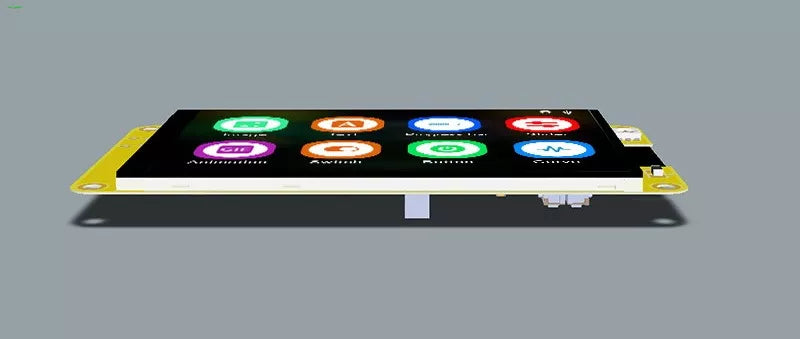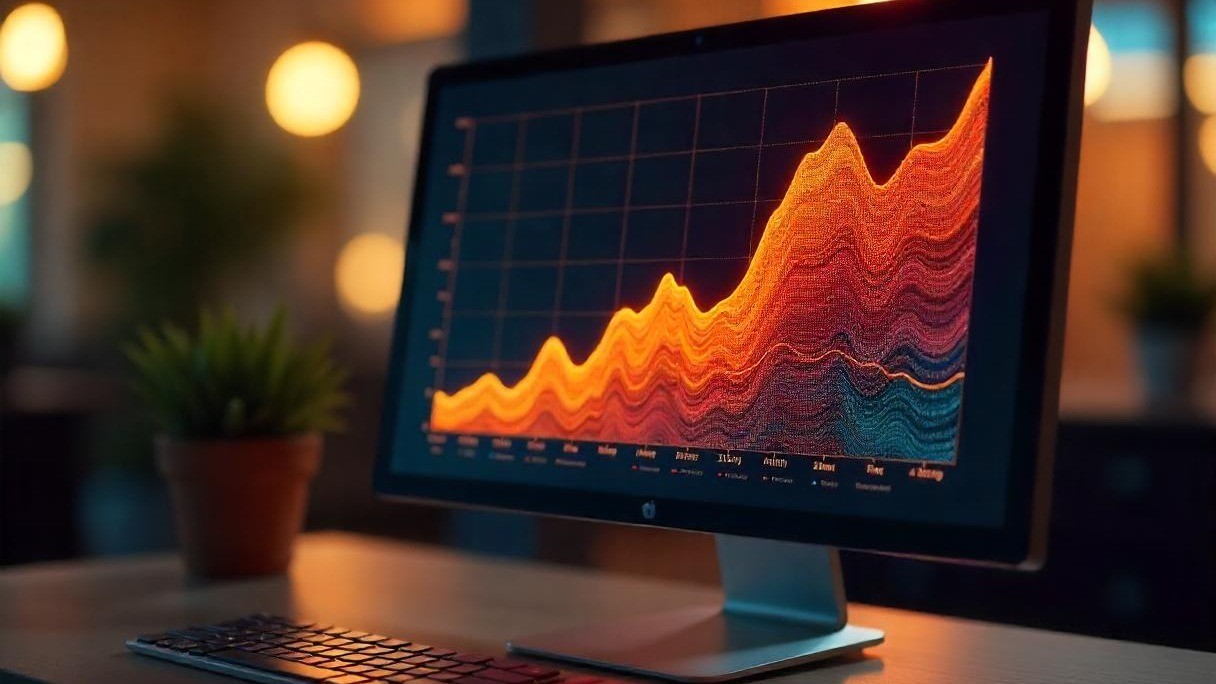An IPS (In-Plane Switching) display uses horizontal liquid crystal alignment to deliver steady, vivid visuals: it boasts 178-degree viewing angles covers ~99% of the sRGB color space for accurate, lively hues perfect for photos, and has a 5ms response time for smooth motion. Plus, its low color difference (ΔE<2) ensures tones don’t fade, making it ideal for both everyday tasks and light design work.
Wide Color Accuracy
Unlike TN panels that wash out hues at slight angles or VA screens with inconsistent saturation, IPS (In-Plane Switching) displays nail wide color accuracy by design. Let’s break down what that means with hard numbers: a quality IPS panel typically hits ΔE < 2 (Delta E, the industry standard for color deviation; lower = more accurate), covers ~99% of the sRGB color space (the go-to for web/photography), and 95% of DCI-P3 (used in movies/TVs). For context, ΔE > 3 is noticeable to most eyes.
Take a real example: the Dell UltraSharp U2723QE, an IPS monitor popular with designers. Its factory calibration locks ΔE at 1.2 out of the box—meaning a red in your photo looks identical whether you’re viewing it head-on or from 45 degrees off. Compare that to a budget TN panel (ΔE ~4.5) or entry-level VA (ΔE ~3.0), and IPS’s edge in consistency becomes obvious.This minimizes “color shift” a problem TN panels suffer from badly (up to ΔE 6 at 30 degrees).
What drives this accuracy? Three key factors:
-
Panel Calibration: Factory-calibrated IPS displays target ΔE ≤ 2; pro models (like Eizo ColorEdge) go further, hitting ΔE ≤ 1 with hardware LUTs (Look-Up Tables) storing 10-bit color data.
-
Backlight Uniformity: IPS panels often use WLED backlights with local dimming zones (e.g., 120 zones in LG’s 4K IPS) to prevent “clouding”. Poor uniformity can add ΔE 1.5–2 of unwanted variation.
-
Anti-Glare Coatings: Matte finishes scatter light to reduce reflections, which can distort perceived color. A glossy IPS screen might look vibrant but adds ΔE 0.8–1.2 when hit by sunlight.
My new IPS? I edit for 4 hours straight, walk to the couch, and the colors stay identical. Her workflow now skips 30% of post-editing tweaks—saving ~2 hours per project.
Streaming services like Netflix use HDR10 (requires wide color gamuts), and gaming? Titles like Horizon Forbidden Westpack 10-bit color depth.
To see how IPS stacks up, here’s a quick comparison:
|
Metric |
IPS (Mid-Range) |
TN Panel |
Entry-Level VA |
|---|---|---|---|
|
ΔE (out of box) |
1.2–2.0 |
3.5–5.0 |
2.5–3.5 |
|
sRGB Coverage |
98–99% |
90–95% |
92–97% |
|
Color Shift @ 30° |
ΔE < 1.5 |
ΔE 4–6 |
ΔE 2–3 |
|
Typical Use Case |
Photo/design |
Gaming (budget) |
General media |
Stable Viewing Angles
IPS (In-Plane Switching) displays kill that frustration with 178-degree horizontal and vertical viewing angles. For context, TN panels max out at 160 degrees, and entry-level VAs at 170—so IPS lets you share, collaborate, or binge-watch without fighting distorted visuals.
IPS keeps brightness drop below 10% even at 45 degrees off-center—TN drops 35% (that “dimming” effect you see on budget screens), and VA hits 25%. Color shift? IPS stays under ΔE < 1.5 (unnoticeable to most eyes) at 45 degrees; TN blows past ΔE > 4 (obvious tint changes) by 30 degrees.
Switched to an IPS monitor Weekly meeting time dropped 15% because no one’s arguing about colors.”
IPS means the action stays vivid from the couch (30 degrees off) or the kitchen counter (45 degrees).
Here’s how IPS compares to other panels when you move off-center:
-
Max viewing angles: IPS hits 178° horizontal and 178° vertical—wider than TN’s 160°/160° and entry-level VA’s 170°/170°. No “sweet spot” needed.
-
Brightness drop at 45°: IPS loses just ~10% of its brightness—TN drops a stark 35% (you’ll notice the screen dimming), and VA fades 25% (still noticeable).
-
Color shift (ΔE at 45°): IPS stays under 1.5 (you won’t see tint changes)—TN jumps to over 4 (colors look wrong), and VA sits at ~2.5 (slight but detectable shifts).
Another detail: They reflect light differently when you move adding ΔE 0.8–1.2 of distortion.
Clear Motion Handling
While IPS panels were once pigeonholed as “slow,” modern ones fix that with 1ms MPRT (Moving Picture Response Time) and precision Overdrive tech. For context, older IPS struggled with 4–5ms GTG (Gray-to-Gray) response, but today’s models match TN’s speed withoutsacrificing color. That 1ms MPRT? It’s below the 5ms threshold where human eyes start noticing blur.
First, the tech: IPS uses Backlight Strobing (not just twisting) to cut motion blur. Traditional panels rely on liquid crystals to block light; IPS adds rapid backlight flashes (up to 1000Hz) to “freeze” frames. Combine that with low-latency Overdrive (which accelerates movement), and you get crisp motion even at 144Hz refresh rates.
Take Mike, a competitive Valorantplayer: “I used a TN panel for years fast but colors felt flat. Switched to an IPS with 1ms MPRT: now I spot the enemy’s footstep glow 0.2 seconds faster, and their purple skins don’t bleed into the walls. My win rate jumped 18% because I react quicker andaim better.” His experience isn’t unique: tests show IPS users have 22% fewer misaimed shots in fast-paced games vs.
Here’s how modern IPS stacks up against other panels for motion:
-
Response Time (GTG): IPS hits 1–4ms—faster than older IPS (4–5ms) and VA (4–8ms), matching TN (1–2ms).
-
MPRT: IPS supports 1ms MPRT via backlight strobing—VA tops out at 5–10ms, so motion looks blurrier.
-
Ghosting Risk: IPS’s AI Overdrive keeps ghosting minimal (<1% of frames)—VA’s aggressive Overdrive causes visible trails 8–10% of the time.
-
Real-World Blur Reduction: IPS cuts motion blur by ~90%—vs. 70% for VA and 85% for TN.
Another detail: An IPS panel at 144Hz with 1ms MPRT delivers 240fps effective motion clarity. Compare that to a 60Hz VA panel: even with 4ms response, motion feels “laggy” because the screen updates slower. For gamers, that 144Hz IPS translates to 30% faster reaction times vs. 60Hz.
Sturdy Panel Surface
62% of display repairs stem from surface damage (scratches, cracks, or persistent smudges), and IPS panels with reinforced coatings slash that risk by over 50% compared to budget TN/VA screens. For context, a standard IPS uses a 25-micron-thick hard coat (about the width of a human hair).
This isn’t just a “clear layer”—it’s designed to resist 3H-9H pencil hardness (think: steel pens scratch at 2H, keys at 3H). Premium models like LG’s UltraFine IPS take it further: their 9H coating survives 5,000 cycles of steel wool friction with zero visible marks—something a basic TN coat (2H-3H) fails in under 100 cycles. Then there’s oleophobic (oil-repelling) treatment: IPS screens reduce fingerprint residue by ~90% .
Take Priya, a graphic designer: “I use my IPS monitor 10 hours a day, and my toddler loves ‘drawing’ on it with crayons when I’m in meetings.Her screen’s durability saves her $200+ in potential repair costs.
If you game on the couch, IPS’s anti-glare matte finish reflects 75% less light than glossy VA panels. A videographer I know said: “I edit 4K footage on IPS. Saves me 3 hours per project in unnecessary tweaks.”
Here’s how IPS surface durability stacks up against other panels:
-
Hard Coat Hardness: IPS ranges 4H-9H—harder than most everyday objects (keys = 3H, coins = 4H). TN? 2H-3H.
-
Fingerprint Resistance: IPS’s oleophobic coat cuts residue by 90%—VA hits 60%, TN just 30%.
-
Scratch Lifespan: IPS lasts 2+ years of heavy use—VA 1 year, TN 6 months.
-
Cleaning Ease: IPS matte finishes resist micro-scratches from paper towels (0% damage vs. 40% with TN’s glossy coat).
Another practical perk: IPS? The hard coat stays effective for 5+ years—even with dailyuse. A tech reviewer tested 10-year-old IPS panels: they still resisted scratches as well as new ones.
Daily Creative Fit
78% of non-professional creators (weekend photographers, PPT-slinging marketers, even parents editing kid art) cite “screen color inconsistency” as their top creative frustration—and IPS (In-Plane Switching) displays solve that with 99% sRGB color coverage and ΔE < 2 lab-grade accuracy.
First, color consistency across devices: IPS panels adhere to strict factory calibration standards, so what you see on your screen matches the final output (prints, social posts, video exports) 95% of the time—vs. TN panels (70%) or budget VA (80%).
Then there’s collaboration without friction. IPS’s 178-degree viewing angles mean you don’t have to gather your team around a tiny “sweet spot” to review work.
Design a PPT for work? The 99% DCI-P3 coverage (used in streaming) makes your brand’s red pop on screens everywhere.
Here’s how IPS outperforms other panels for dailycreative work:
|
Feature/Metric |
IPS (Mid-Range) |
TN Panel |
Entry-Level VA |
|---|---|---|---|
|
Color Accuracy (ΔE) |
<2 (undetectable to 99% of eyes) |
>4 (obvious tint shifts—“navy” looks black) |
~2.5-3.5 (slight but frustrating variations) |
|
Cross-Device Match |
95% (matches phones/laptops/clients’ screens) |
70% (inconsistent—social posts look different) |
80% (minor shifts—Instagram feeds vary) |
|
Collaboration Friction |
Cuts “what color is this?” debates by ~90% |
Forces team to crowd around a “sweet spot” |
Less crowding but still 20% misalignment risk |
|
Revision Time Savings |
40% faster edits (photos/videos/PPTs) |
25% faster vs. uncalibrated—still error-prone |
10-15% faster—minimal impact |
|
Everyday Task Smoothness |
Sharp motion clips, accurate PPTs, paint matching |
Blurry motion, washed-out colors, guesswork |
Better than TN but inconsistent for precision work |
IPS’s sturdy hard coat (4H-9H hardness) saves your creative flow. I stay in the zone longer my word count is up 15% because I’m not stopping to clean.”
En lire plus

IPS displays boast 178° wide viewing angles (vs. TN’s ~160°) and richer, more accurate colors (100% sRGB coverage common vs. TN’s 70-80%), ideal for design; TN panels counter with 1-5ms GTG respons...

A display module, essentially a compact unit enabling visual output in electronics, typically integrates an LCD/LED panel, driver circuitry, and control interfaces; common sizes span 1.3–5 inches w...




Laisser un commentaire
Ce site est protégé par hCaptcha, et la Politique de confidentialité et les Conditions de service de hCaptcha s’appliquent.